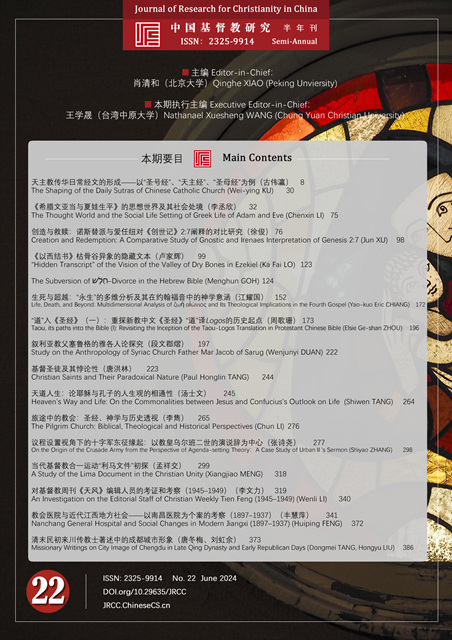Abstract
The extra-canonical Greek Life of Adam and Eve (GLAE) was the popular narrative text spread among early Christians, and had significant influences to later Christian religious literature. This paper investigates the GLAE’s text and thought world in the theoretical perspectives of intertextuality and theory of social reality construction, and proposes that this narrative was creatively composed according to the framework of Genesis 2–3, reflecting the harsh life experience of poor farmers in late Roman society. The painful reality of material shortages, heavy burden of labor, anxiety about lowered social status and the oppression from the landlords were projected into the narrative of Adam and Eve’s earthly life and their relationship with God and Satan. The GLAE’s new ‘Paradise Lost’ narrative in fact provides a cosmic explanation of painful agricultural life of lower families in general, and constructs a specific ‘back to Paradise’ expectation by developing the themes of forgiveness of sins and God’s promise of eschatological resurrection. The primary social function of the narrative, therefore, was to consolidate the religious identity in difficult times by drawing a relatively optimistic vision of God’s just rule.

This work is licensed under a Creative Commons Attribution-NonCommercial-NoDerivatives 4.0 International License.
Copyright (c) 2024 Journal of Research for Christianity in China

